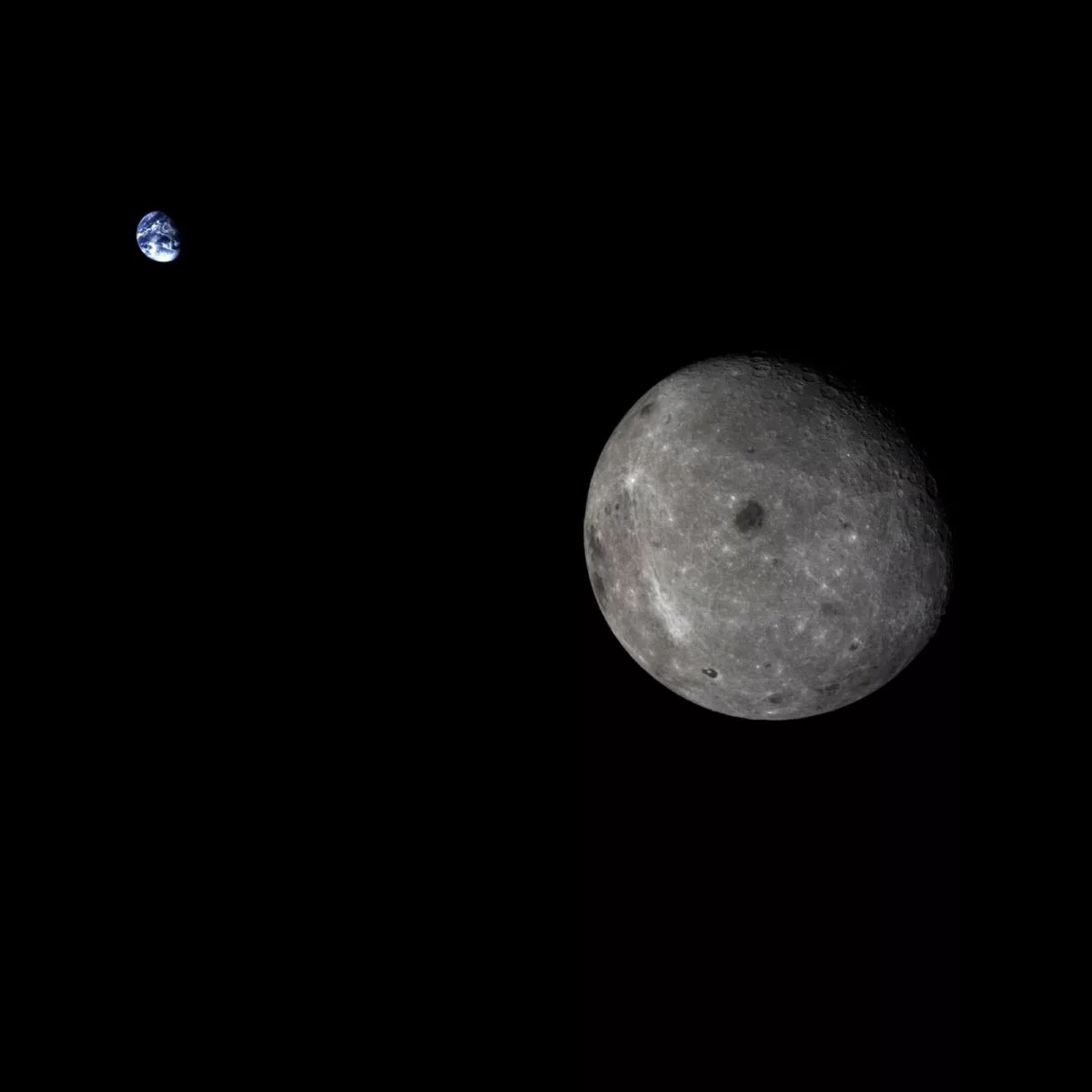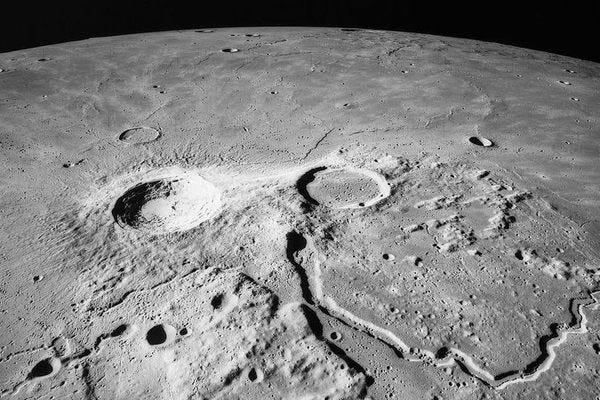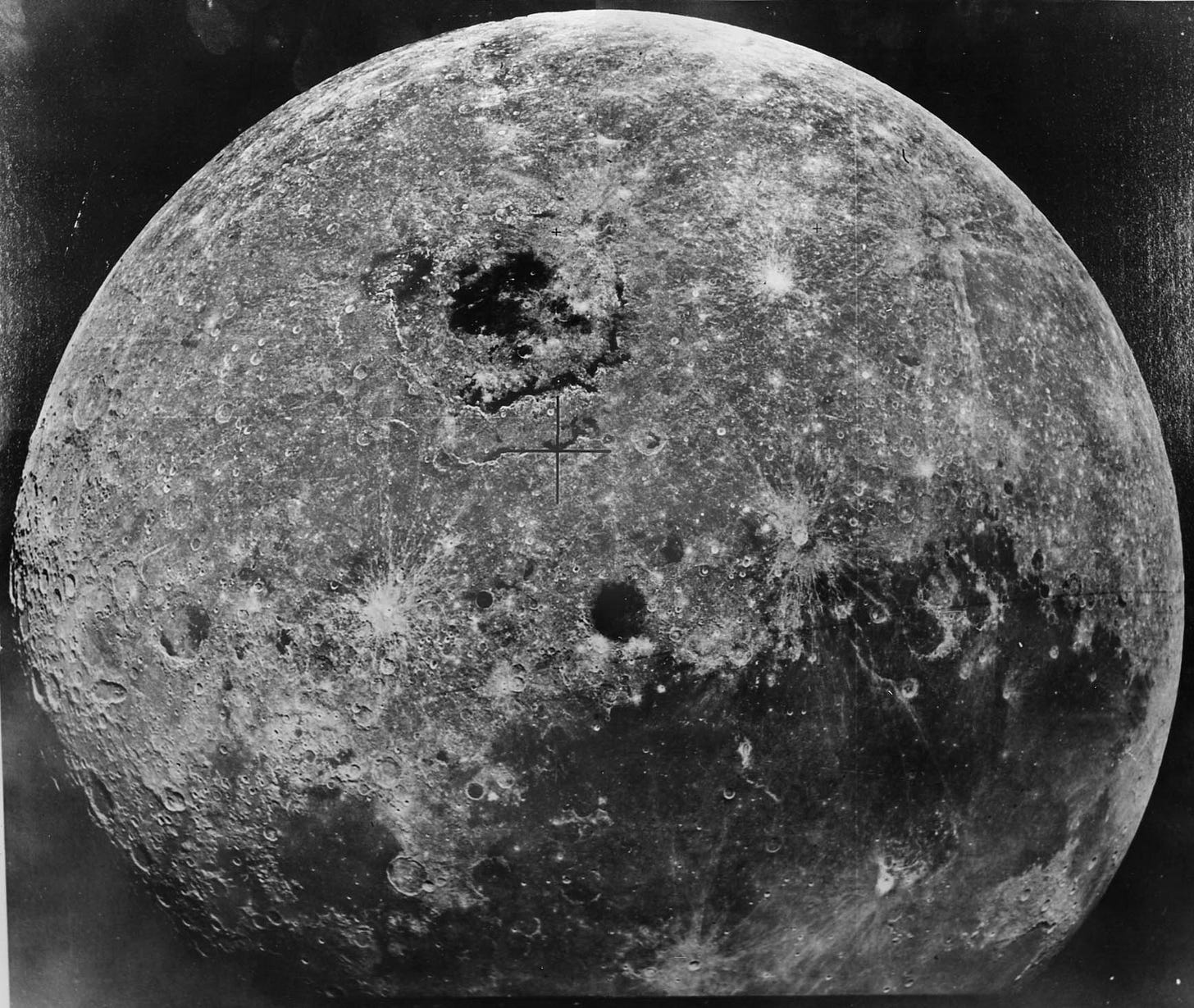Welcome to the Dark Side of the Moon
China makes successful Lunar landing in historic attempt to retrieve samples from the Dark Side.
China has made another successful robotic landing on the Moon and this time the Chang'e-6 probe aims to send back the very first mineral samples from the Dark Side.
It’s remarkable how little we know about our Moon and bewildering how wrong we are about such an obvious feature of our sky. The Moon in some respects is like a demilitarized neutral zone between 2 competing theories of Cosmology as well as a Cold War battlefield between the US and China/Russia. Very little new evidence has been available for a few decades, so cosmologists have contented themselves looking for dark matter, multiverses or the possibility of finding alien life on some pixels.
I think cosmologists and scientists in general felt that the Moon was a Done Thing and they weren’t going to find funding in that direction. They were probably right about the funding but are probably now beginning to realize they were dead wrong about the Moon being settled science.
Although nothing much is acknowledged by academia, and very little is made public from recent US, Chinese, Indian and Russian Lunar missions, we are seeing some curious new language in use and mission objectives that reveal a change of ideas.
An example of this new language seen in recent Chinese, Indian and Russian missions is a sudden interest in the Moon’s plasma. Plasma on the Moon? Yes, the Moon actually does have an atmosphere albeit vanishingly thin. It is little more than a diffuse cloud of ions but that’s all you need for a plasma and plasma carries current, something to bare in mind for Lunar probes that might have a different electrical potential to the Moon they are attempting to land on.
One of the most important mission objectives is to return samples of the minerals at and under the Lunar surface. There have been glass-like fragments discovered on the Moon before, some apparently contained minerals that should be quite impossible to form there. This is the kind of evidence we need to try to understand our Moon’s story because much of what we’ve been told doesn’t fit. Some of these minerals for example, suggest a catastrophic origin more recent than the Moon’s formation (which is another mystery in itself). There was also the curious fact that India’s mission found the Moon was an unexpected temperature immediately underneath the surface.
Most of us mortals have only ever seen the same face of our tidally locked Moon. We might imagine that the far side is quite similar, but that’s where this story starts to become Dark.
In Greek Mythology the Moon was associated with Aphrodite (not Venus as is often thought), and in the Iliad we read that Aphrodite found herself caught between the warring Ares (Mars) and Pallas Athena (Venus) and was herself struck by bolts from Pallas Athena. While we shouldn’t take Homer too literally here, the Lunar surface very much does appear electrically scarred by great bolts.
Spend some time studying Lunar craters and you will see more and more features that cannot be attributed to rocks falling from space or even volcanic eruptions. Hexagonal craters often in groups, long chains of identical craters snaking across the surface, craters over-lapping other craters without any debris or disruption of the shape, canyons or “lava rivers” that run up-hill or end abruptly without any outflow.

What does the Far Side of the Moon really look like?
You would think this would be easy enough to answer straight away. Surely everybody knows that? While you can certainly find plenty of NASA images, few show the whole face of the Moon and many of them seem strangely at odds with the Soviet (and Russian) and Chinese images. The following two images contrast Apollo 16 and the Soviet Zond 8 missions and indeed it’s hard to imagine they show the same Moon even allowing for different angles. So the answer to this question is, it depends on who you ask!
Perhaps China will be able to present the world with some decent high resolution images of the far-side, or perhaps that information is not for sharing.
But enjoy this video they have provided of the descent and landing on the Far-side of the Moon. You will see many of the bizarre crater features I have described above.







A reader was kind enough to point out an apparent error in my mythological references to Aphrodite, Ares and Pallas Athena and to which astronomical bodies they were associated. I omitted to mention here that I was evoking Immanuel Velikovsky's "Worlds In Collision" interpretation of the Greek Myths and of the Iliad, which is quite different to what is usually understood to be correct!